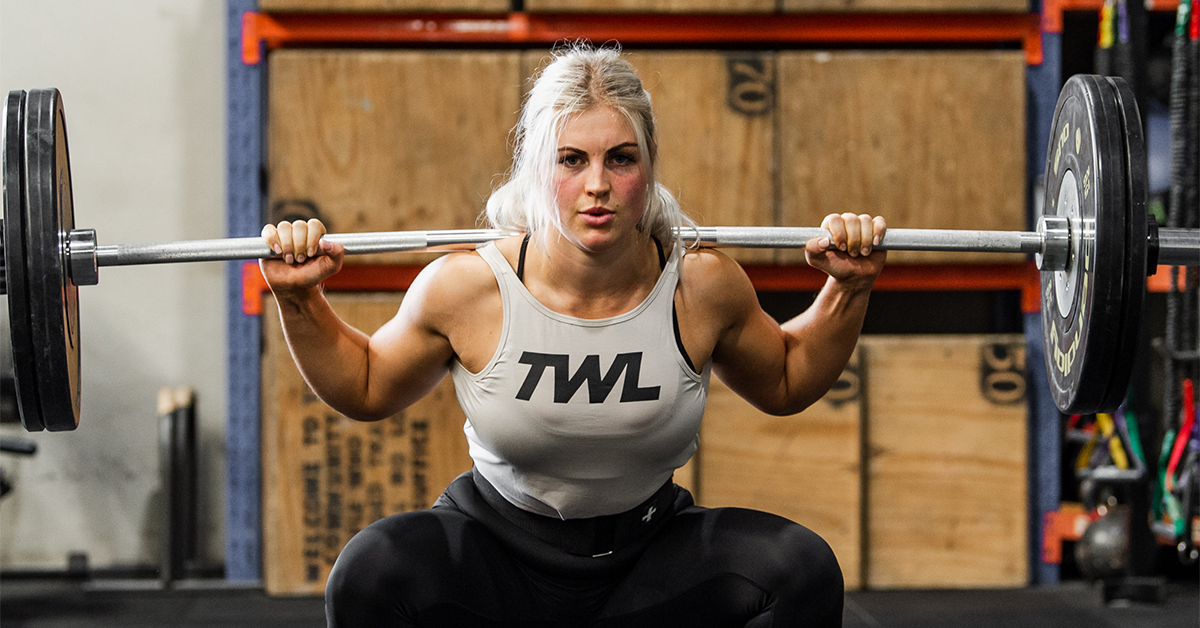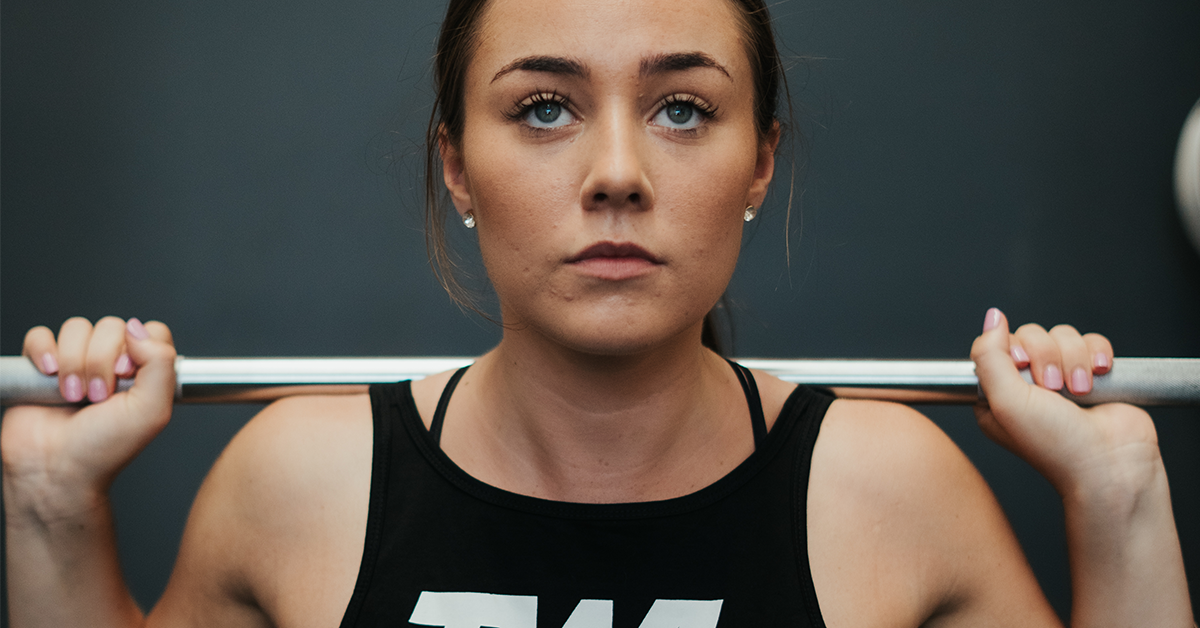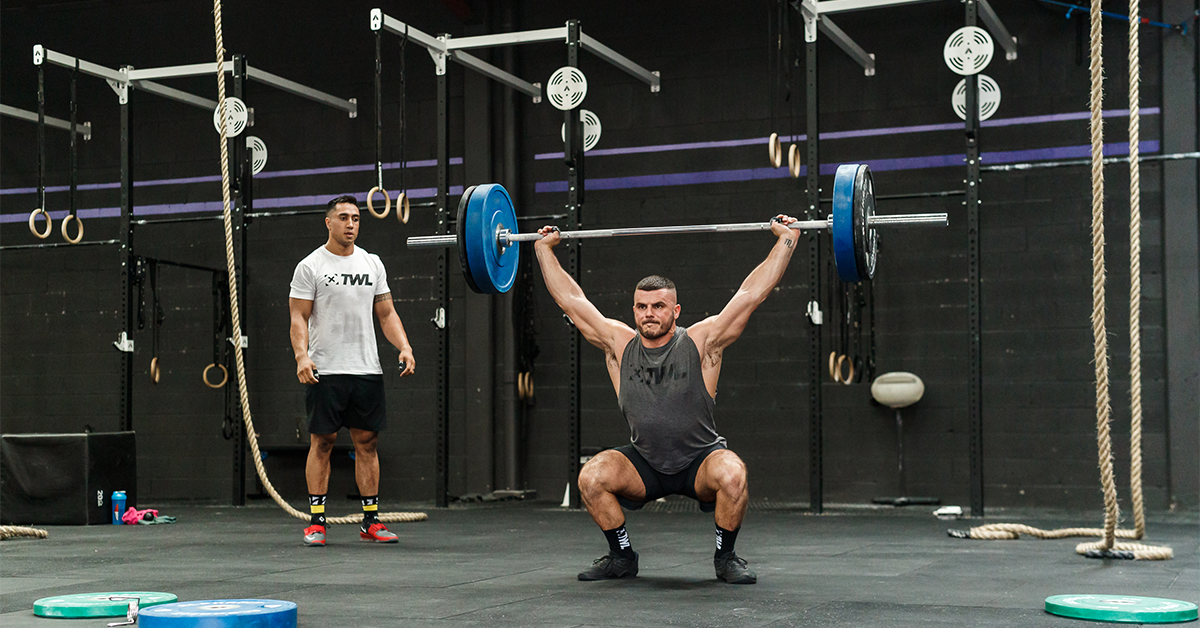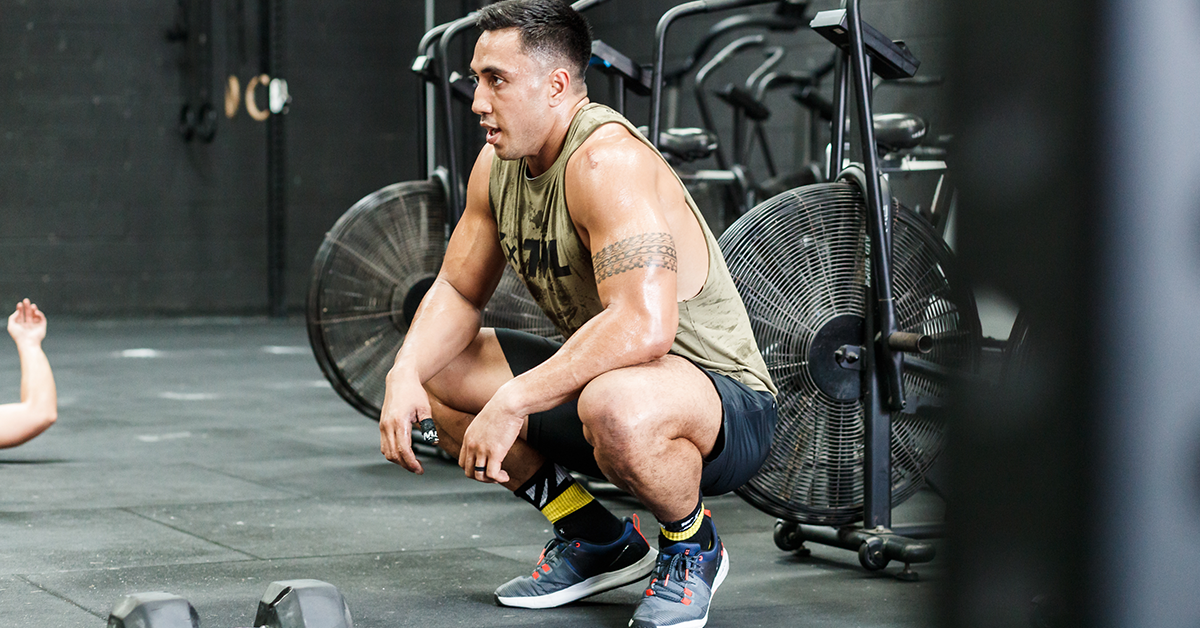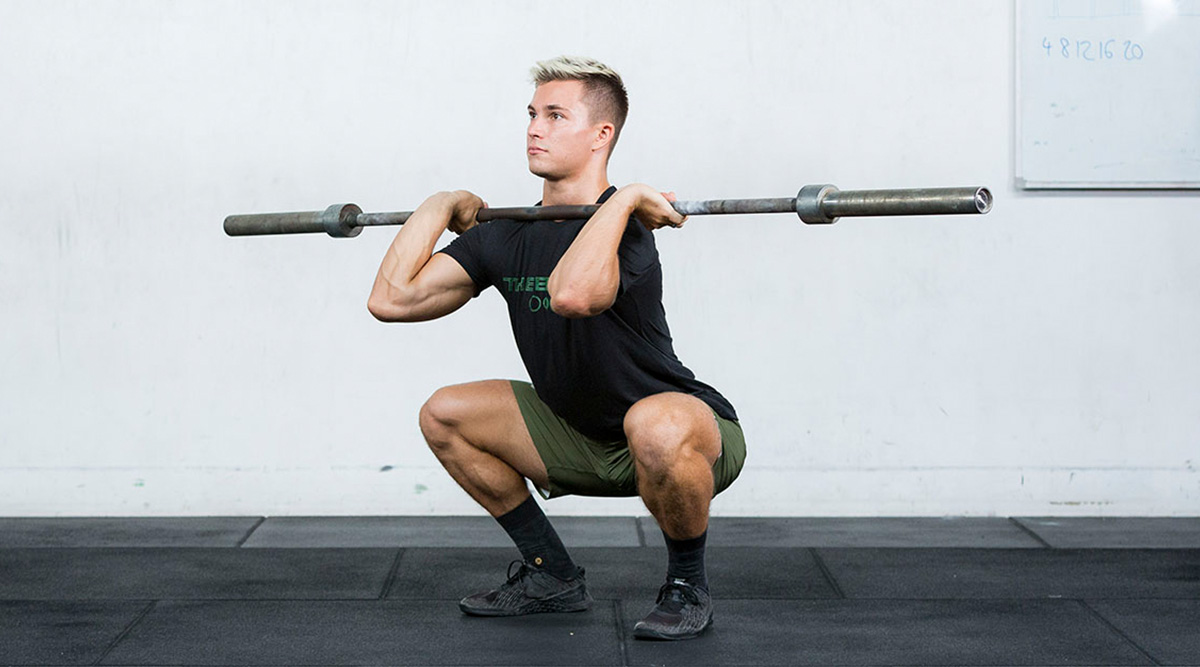Is leg day even complete without squats? (No.) With its massive demand for strength and mobility, the squat brings out the best — and worst — in all of us. And it never gets easier. (If it does, go heavier!) But with struggle comes all the incredible benefits. So, continue to push yourself by exploring various squat variations — and get stronger in the process. The pin squat, a movement that overlaps with the box squat, tempo squat, and pause squat, is one of the toughest versions you can try.
What is a Pin Squat?
The pin squat starts in a low position, with the bar resting at the back of the shoulders and supported by pins or safeties. From there, the lifter moves the bar upwards in a concentric movement (meaning you stand up).
In other words, instead of starting in a standing position and squatting down, you start in the squatting position and stand up. It looks like this:
To be clear, you can also use front squats for the pin squat.
Because of the positioning, expect to pin squat less weight than you normally would.
How to Do the Pin Squat
- Set the barbell on the safety pins inside the squat rack. Keep it low, but not low so low that you can’t get into the proper position under it. You will be starting the lift at this point. Thus, place it at a challenging but doable height.
- Get into your normal squatting position. Place the bar behind your neck, over your shoulders.
- Hold the bar firmly while engaging your core and squeezing your shoulder blades together.
- Rise from the bottom position. While ascending, keep your back engaged and avoid any uncontrolled movements. From the pins, the weight of the bar is now on your shoulders, so try your best to maintain full control.
- Once you reach the top, gradually start the downward phase, squatting back down to your bottom position. Briefly rest the bar on the safety pins and then repeat for additional reps.
How low you start is up to you, but more often than not, you should at least be at parallel. Oftentimes, though, athletes will set the bar up directly at their bottom position, so this is the spot where we all need to build strength the most.
Shop Now
What Muscles Do Pin Squats Work?
Pin squats pack a serious punch. You’re going to feel the burn in your:
- Quadriceps
- Adductors
- Glutes
- Hamstrings
- Core muscles
- Abductors
- Upper back
- Latissimus dorsi
- Rhomboids
- Trapezius
- Lower back
- Spinal erectors
What are the Benefits of the Pin Squat?
1. It’s a box squat and tempo squat combined.
People perform the tempo squat to slow down the movement, helping them feel every change in the squat and easily apply all the necessary adjustments. Plus, it builds serious strength, since you increase your time under tension.
Meanwhile, box squats put less pressure on the knee joints than other squat exercises like back squats and front squats. It’s, therefore, a popular routine for beginners who want to improve the movement and eventually do more advanced variations. It’s also helpful for people with limited squat mobility or those recovering from injury.
The pin squat combines these advantages in one movement. By performing this routine regularly, you can enjoy the best of both worlds.
2. It helps improve squat depth, technique, and lifting patterns.
The pin squat’s slow tempo and lighter weight help people become more comfortable in the squat position. The more they practice in complete control, the more they can improve their squat technique and lifting patterns. This movement can also be of great help to those struggling to squat to full depth. With the use of safety pins, lifters can challenge themselves to accomplish a deeper bottom position over time.
3. Pin squats help the lifter maintain the optimal bar path.
Maintain the proper bar path throughout the movement to make the most out of the pin squat. If you fail to maintain the optimal bar path, you can strain your joints and increase the risk of injuries. So, how do you do it? The pins are your best friends! The safeties can help you gain more control of the bar and keep moving in the right direction. Without the right technique, it’s going to be very difficult to get the barbell out of your bottom position.
4. It focuses on the concentric movement.
Squats and other exercises have concentric and eccentric elements. In eccentric movements, the muscles lengthen as you descend to a bottom position. This muscle contraction promotes significant muscle growth due to the energy exerted by the load and muscle soreness and micro-tears that occur.
Pin squats focus on concentric movements — meaning the up phase. When you stand up with the bar, concentric contraction occurs, producing tension and causing muscles to shorten. This results in increased endurance and power since you’re accelerating, overcoming gravity, and generating more energy to move a heavy object.
Pin Squat vs. Pause Squat: What’s the Difference?
The pause squat doesn’t require pins or other equipment. The pause at the bottom of the movement can be brutal (in a good way!), helping the lifter stay upright and figure out which muscles must feel tension. Plus, you spend more time with your muscles engaged, which equals improvements in strength.
Are pin squats harder? Yes and no. In some ways, the pins give you a sort of advantage. However, starting from the bottom of your squat (where most athletes are weakest) is going to be much more challenging, especially if it’s a new stimulus.
A New Fitness Challenge Starts Today: Master the Pin Squat!
Make pin squats a regular part of your programming to increase muscle endurance and build explosive strength. It’s the perfect squat variation for those who want to level up their fitness game and gradually produce lower-body strength. Modify the movements based on your training goals, but always do it in proper form to achieve the best results. Good luck!

